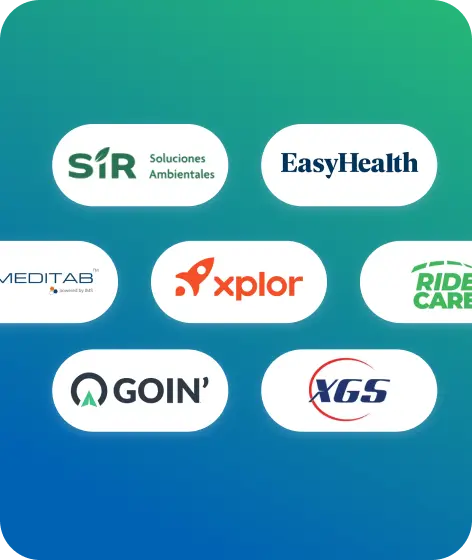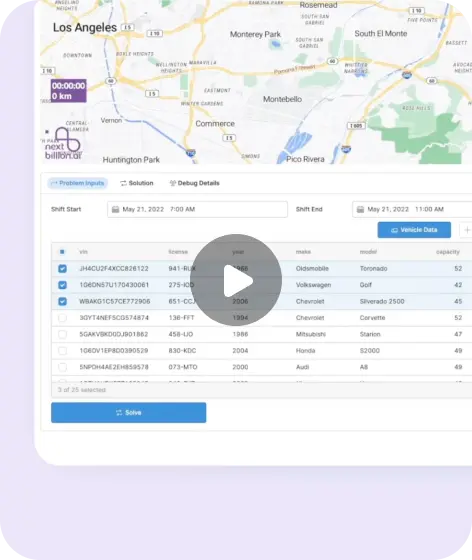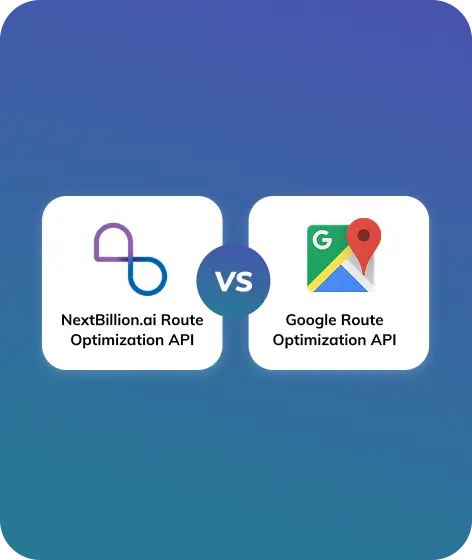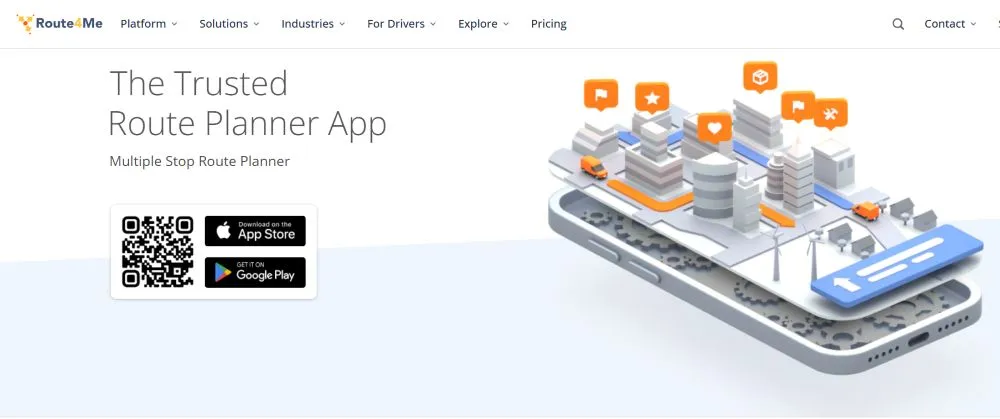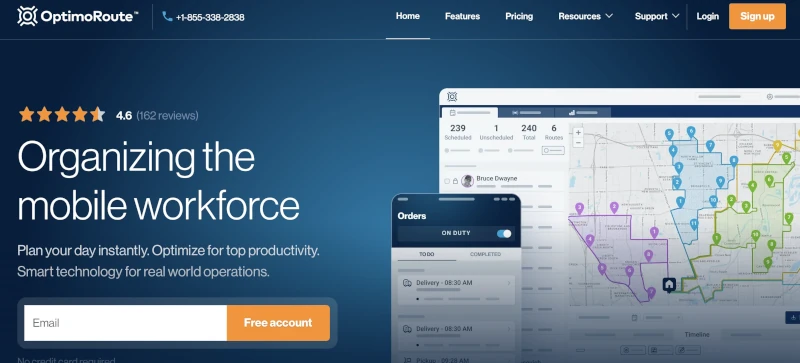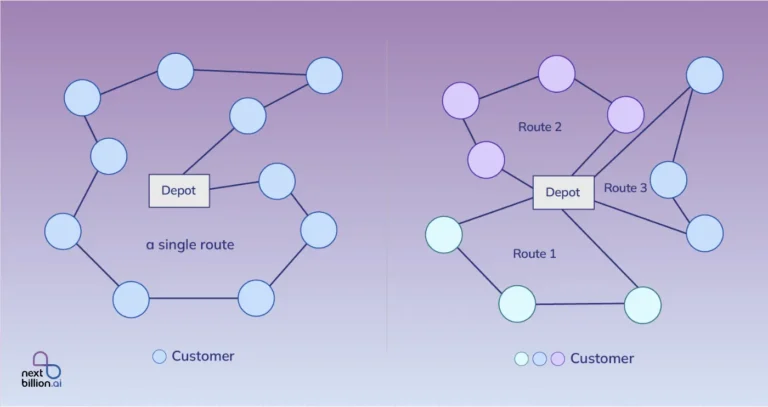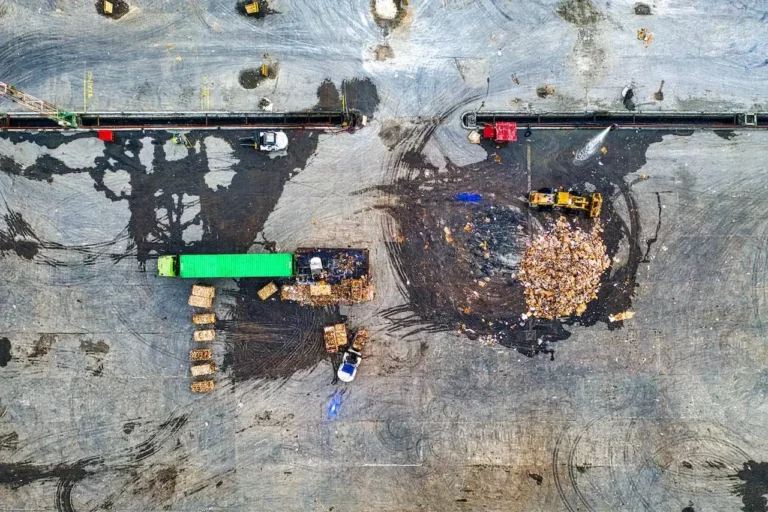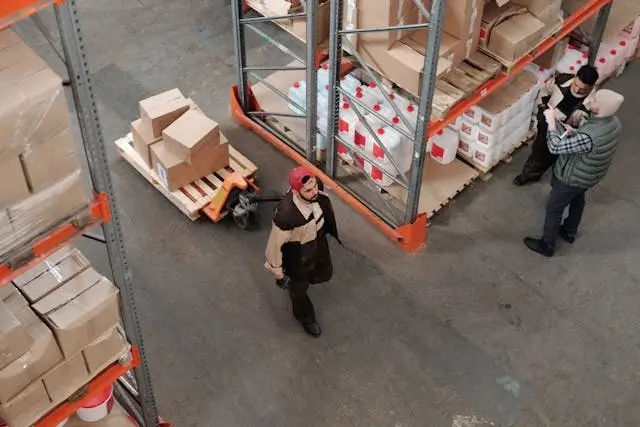
Table of Contents
Route optimization can offer incredible benefits to various organizations, especially pest control businesses. If you’re interested in reducing costs, finding the most efficient routes, and saving fuel time, route optimization is a must for your company.
There are relatively easy ways to invest in drive planning, faster route identification, and delivery routing. You can even get a solid GPS tracking system for your vehicles through these techniques. If you’re still confused about the benefits associated with route optimization for pest control companies, this guide is for you. Here, you will get to learn the core purpose of this technique, its importance, key benefits, and other contributions in detail.

What is Route Optimization in Pest Control?
Route optimization in pest control is the process of planning the fastest and most cost-effective way for mobile field service workers to travel from one place to another for completing appointments. Modern route optimization platforms do not just calculate distance, in fact, they simulate drive-time scenarios, account for real-time service constraints, and generate multi-day route maps when service schedules span multiple client sites over longer intervals.
Efficient, strong, and tight routes allow businesses to get more services done and satisfy customers by sticking to the estimated time of arrival (ETA). These routes also provide updates when pest control experts are on their way.
Some advanced platforms now include predictive ETA adjustments using historical traffic models. These models factor in variables like road work, seasonal congestion patterns, and technician speed profiles, yes, even down to individual driver habits logged over time.
Definition and Core Purpose
Route optimization is a key aspect of field service management that helps save time and reduce fuel costs. It also helps pest control businesses improve customer satisfaction by ensuring all technicians reach their destinations efficiently.
Instead of depending on manual calculations and guesswork, this field service optimization software automatically generates the most efficient routes by considering factors like traffic conditions, distance, and driver availability.
The core engine behind these platforms typically runs on constraint-based solvers or heuristics like Tabu Search or Genetic Algorithms. That means every route built is not a guess, it is a result of tested permutations filtered through business logic, technician parameters, and service-level expectations.
Importance in the Pest Control Industry
Pest control scheduling software is the best way to boost efficiency in any company functioning in this field. Tight daily schedules and geographically scattered jobs were common in pest control companies when AI and automation were far from invention. Employees and employers alike struggled to keep track of their activities, all while trying to fulfill customer expectations.
Moreover, recurring visits and time-sensitive service windows became difficult to manage. Missing even a single appointment could lead to dissatisfied customers and repeat infestations. Today, with intelligent route optimization for pest control companies, it has become easier to automate route planning, reduce overlaps, and ensure every client is served on time.
The biggest change? The ability to integrate pest recurrence patterns into the routing logic. That means software can prioritize sites with prior high infestation levels, push preventive follow-ups higher in the schedule, and weigh those visits differently when building out a route matrix. It is not just faster, it is smarter risk-based routing now.
Key Benefits of Route Optimization for Pest Control Companies
The best way to boost field efficiency across pest control companies is by leveraging the benefits of route optimization. Pest control route management software covers planning out routes resulting in a given set of stops. Its key benefits include:
Reduced Fuel and Vehicle Costs
Route optimization is the best way to ensure a reduction in the operational expenses of pest control companies. When smart scheduling allows technicians to drive fewer miles regularly, it automatically helps them cut down fuel production.
Over time, this will also help reduce the wear and tear on vehicles, which reduces the frequency and cost of maintenance. In fact, platforms can now project fuel spend per route using vehicle-specific fuel consumption data. Some go further by benchmarking route costs against historical vehicle telemetry, flagging inefficiencies in daily plans long before they add up to an expense spike.
Hence, route planning tools for exterminators allow pest control companies to ensure significant vehicle maintenance. They can also reduce fuel costs with routing software with just a simple click.
Increased Technician Productivity
Technician productivity increases to a great extent, thanks to the efforts of route optimization to ensure time is spent more effectively. It means, there is no time wasted on traffic or inefficient travel paths. Hence, technicians can control more service calls within the same timeframe.
Meanwhile, pest control dispatch software enables efficient route optimization which allows companies to align technician availability and job requirements. This helps them maximize resource use. As a result, jobs are better distributed, schedules are tighter, and field teams are more empowered to perform at their best.
What is also evolving now is technician-based scoring. Some platforms assign productivity scores by route type, job complexity, and zone frequency, helping managers route top performers to high-stakes jobs while giving newer techs more manageable loops.
Improved Customer Satisfaction
If any of your techs are given the most efficient route possible, they are more likely to show up in the original arrival window.
You may also start to tighten up your arrival windows so that your customers have a better idea of what you will eventually show up. There are few things as frustrating for customers as being told that a pest control technician will arrive “sometime between 12:00 and 5:00.”
Smart routing now supports predictive time slot allocation, offering the tightest possible windows customers can actually believe in. Systems also trigger pre-visit alerts, route-linked live tracking, and feedback loops embedded into ETAs that auto-adjust if there is even a 5-minute deviation.
Smarter Territory Management
If you’re still thinking that route optimization is all about getting from point A to B, then you’re wrong. It’s specifically about managing work efficiently and strategically across teams. Pest control technician routing software allows companies to balance jobs across technicians.
It also makes sure to cover all the high-demand zones without any overlap. Such smarter territory management allows pest control companies to scale up more effectively. They can do so while maintaining employee satisfaction and service quality.
Advanced territory systems now factor in technician certifications, pest type, service frequency, and even zip code revenue contributions. That means route plans are not only efficient, they are aligned with business growth metrics and technician expertise zones.
How Route Optimization Software Works in Pest Control
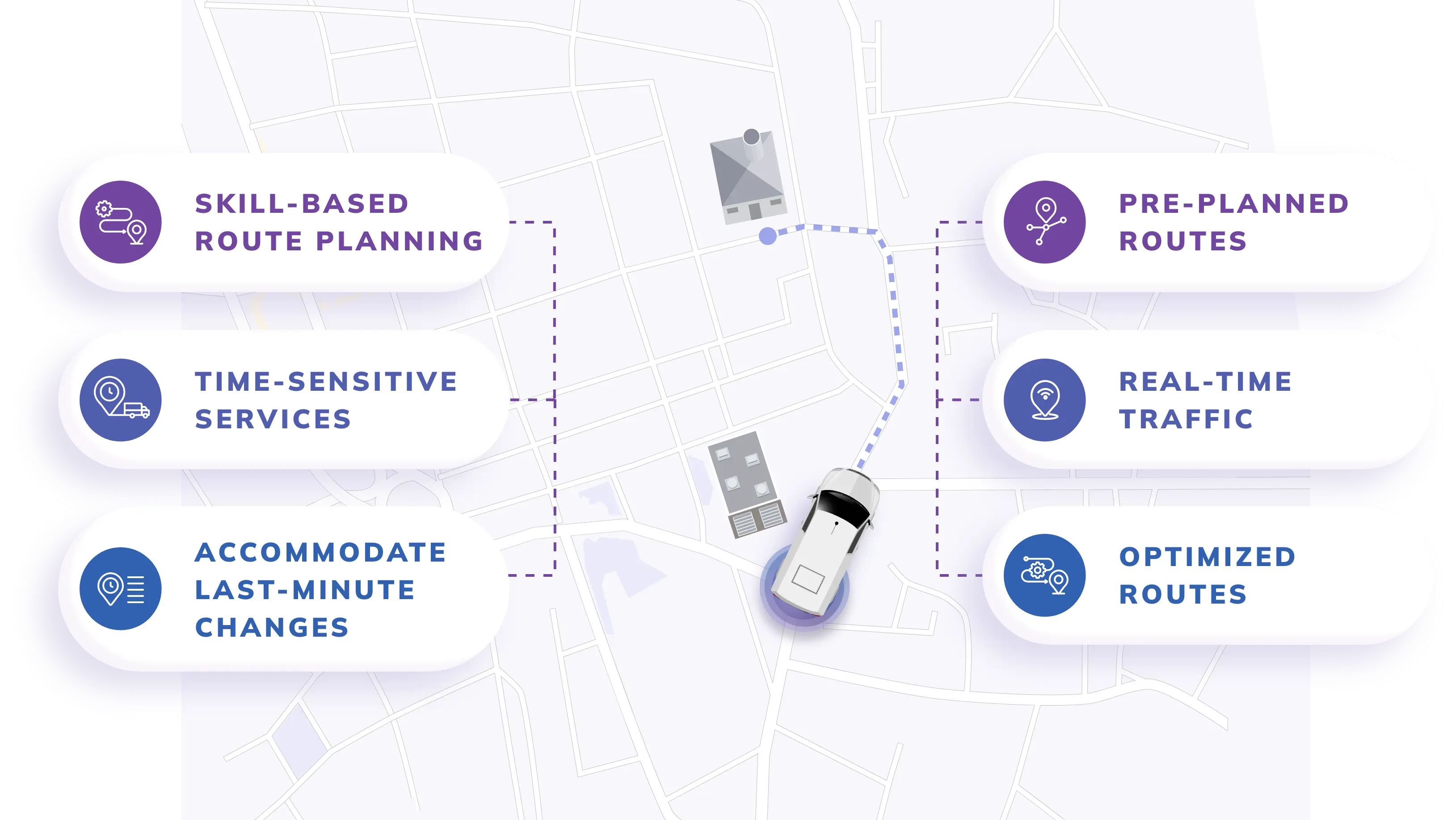
Daily job scheduling for pest services becomes easier only by leveraging route optimization software. It works efficiently for all pest control companies, irrespective of their sizes, to help streamline operations.
Here is an overview of how route optimization software works in pest control:
Integration with Scheduling and CRM Tools
Did you know that route optimization software integrates efficiently with scheduling and CRM tools? Yes, the best software for pest control logistics collaborates with additional tools to pull job details, service preferences, and customer history automatically.
This allows managers from pest control companies to assign jobs based on location, urgency, and technician availability. Such unique integration reduces the chances of double bookings and manual errors for regular, efficient operations.
Advanced systems now support bi-directional sync with ERP modules, allowing contract updates, payment statuses, and inventory depletion to reflect instantly inside the same operational view. Technicians can receive job-specific notes, images, or chemical restrictions pushed directly to their mobile app from the CRM, without a single email or call.
GPS Tracking and Live Route Updates
Efficient routing and GPS tools are designed to meet the needs of pest control businesses. Lightweight, flexible, powerful route planning and live vehicle tracking provide teams and their managers with relevant information needed to get more jobs done in the day.
Moreover, real-time tracking through route optimization software ensures that routes can be adjusted on the fly. Customers can receive updated ETAs, while technicians are rerouted in the most efficient manner possible.
Some platforms now embed real-time traffic data layers, live weather overlays, and road condition alerts from government APIs or private data streams. This means pest control teams can avoid roadblocks, rain-delayed zones, and even construction detours, all without needing dispatch intervention. Geo-fencing is another critical tool, triggering location-based check-ins, no-show alerts, or arrival notifications without manual input.
Automated Dispatching
Automation has made dispatching smarter than ever. With pest control scheduling software, job assignments consider technician skill sets and their proximity to the job site. This often depends on the urgency of the request. Hence, emergencies are prioritized and travel time is minimized with efficient route optimization for pest control companies. This allows technicians to be sent to jobs where they’re most effective.
In advanced dispatch systems, AI-assisted load balancing dynamically adjusts job assignments throughout the day, based on cancellations, delays, or equipment failures. Dispatchers can simulate different dispatch scenarios using predictive modeling to test who should go where if another high-priority call drops in. Some tools also auto-flag technician fatigue based on drive hours and job durations to prevent overload.
Best Route Optimization Tools for Pest Control Businesses
You will come across many route optimization tools for your pest control company. However, you must consider only the one that resonates with your business requirements. Here is a list of the top route optimization tools that enable automated route planning while offering several other advanced services.
Route4Me

Route4Me is an easy-to-use route optimization tool for businesses of various sizes. It has a unique planning and optimization platform which allows you to master any complexities associated with your routes at scale. The platform also boasts a patented, proven routing engine and powerful workflow automation that ensures accurate, efficient last mile execution.
Route4Me has a last mile planning software that allows you to create reliable, visual routes in seconds by leveraging various drag-and-drop adjustments. The platform provides you with perfect client services by deploying experts whom you can reach out to using the mobile app support.
PestPac by Workwave

PestPac is a pest control scheduling software known for streamlining, scaling, and supporting businesses in route planning and field service optimization. Its top software features include planning and dispatching, customer relationship management (CRM), mobile application, and billing and invoicing that allows you to manage your business activities under one platform.
This software is specifically built for pest control companies that want to save on fuel costs by optimizing their route planning services. You can also access customer information to help your technicians provide better pest service onsite with PestPac’s assistance.
Verizon Connect

Verizon Connect is a fleet management software that provides you with the most valuable technician productivity insights, especially if you are in the pest control business. You can easily track your vehicles in the field and improve fleet operations with Verizon Connect’s active assistance.
It also helps you increase worker productivity and ensure safe driving with efficient fleet management solutions. All you need to do is choose from a range of customizable GPS tracking solutions that offer the most unique dashboards, reports, and alerts.
OptimoRoute

If you want to reduce fuel costs with routing software, then OptimoRoute is the perfect solution for your needs. This solution is all about organizing the mobile workforce efficiently by offering real-time tracking and dynamic route adjustments.
The most efficient feature of OptimoRoute is automated route planning which enables you to import thousands of orders instantly. This, in turn, allows your technicians to access the most efficient routes and schedules along with their partner drivers. It means you can easily maximize the number of orders while reducing fuel costs significantly.
Tips for Implementing Route Optimization in Your Operations
Route optimization for pest control companies and any other business is possible only if you know how to implement the process correctly. This requires you to indulge in effective planning and leverage some excellent strategies to ensure things do not fall out of place.
On that note, here is a list of tips to follow while implementing route optimization for your operations:
Start With Clean Customer and Job Data
You must have proper customer and job data to integrate it with your routing solutions in real-time. This allows you to have information on the planning routes and the live ones that may not show up on the map at times. Remember, planned routes are based on historical traffic patterns and circumstances like weather and road divisions.
Hence, make sure to leverage software like NextBillion.ai’s advanced route optimization solutions to process real-time data and gather more insights before delivering your services to the customers. Accurate addresses and appointment windows matter, especially when you’re in the pest control business. So, make sure to use the correct data to streamline your operations accordingly.
Also ensure geocoding quality is high, as raw addresses mean nothing if they are not precisely mapped to latitude and longitude coordinates. Even a single pin drop in the wrong lane can send your technician into a fifteen-minute detour that breaks your entire day’s ETA alignment. Use a dedicated address cleansing API or geospatial pre-processing tool to validate, deduplicate, and structure your customer data before upload.
Train Dispatchers and Field Teams
You must train your field teams, drivers, and dispatchers regarding the steps to use the route optimization software to the best of their benefit. This will allow your team to deliver their services to customers on time without compromising quality or quantity.
You can also conduct training sessions in a week or a month to discuss the benefits of using the software while offering pest control services throughout the region. This also helps ensure everyone in your pest control business knows how to use the planning and optimization system.
Beyond just UI training, make sure dispatchers understand fallback protocols. For example, what to do when the GPS signal drops, or how to manually trigger a reroute if dynamic conditions change mid-route. This includes how to respond when technicians miss a scan or when a last-minute job is added into a locked route. Also, field teams should be trained to flag bad address data directly from their mobile app interface so it gets corrected upstream instead of ignored.
Measure Impact Over Time
You must evaluate if everything is working well after having implemented your route optimization software. Track all the key performance indicators (KPIs) to showcase efficiency and ensure that customer satisfaction is exactly the way you want it to be. For instance, you can monitor how many stops your field team could make each day. This, in turn, also tells you if the routes they take are efficient enough for communication.
Keep an eye on total drive time to see if the time spent on the road has reduced. Most importantly, pay attention to customer satisfaction levels, such as on-time arrivals and feedback. This helps you ensure that service quality isn’t affected by faster scheduling. Measuring KPIs regularly helps you make data-driven improvements and ensures your investment in route optimization is paying off.
Also track planned vs actual mileage deviations. If the route optimizer suggested a 17 km path but your technician logged 26 km, you need to understand whether the issue was traffic, detours, stops missed, or user override. Monitor schedule adherence at a micro level, were field teams checking in at the correct geo-fenced locations, and were they within SLA windows? Build dashboards for dispatch supervisors that flag patterns like repeat delays in certain zones or high dwell time at specific job types.
Future of Route Optimization in Pest Control
It seems like nearly every day there is a new gadget, car, smartphone, or computer. While the process of constantly keeping up with all kinds of technological advancements can be intimidating and frustrating to some businesses, these tools are specifically designed to make our daily lives better.
Now, let’s see below how these route optimization technologies have the potential to transform the future of pest control.
Predictive Scheduling Based on Service History
Reliable predictive scheduling always acts according to accurate historical data for factors such as employee availability, customer demand, and past scheduling patterns. Inaccurate data may lead to ineffective schedules and poor predictions.
Most predictive scheduling applications employ artificial intelligence (AI) and advanced algorithms to review historical data and ongoing trends. This helps them predict all kinds of staffing needs for a specific period or project. These insights also allow managers in pest control companies to adjust staffing levels to meet anticipated demand.
The stronger predictive platforms now use Bayesian learning techniques to update probabilities dynamically as new events unfold, which means schedules are not only reactive, they adapt in near-real time. Some tools also factor in technician fatigue levels and travel stress based on route complexity, not just total hours worked. These micro-adjustments improve assignment quality and reduce long-term burnout.
Integrated Field Communication Tools
You can find several field communication tools available on platforms like NextBillion.ai that combine multiple communication channels into a unified system. It promises that the most efficient information flow across teams. The process usually works by centralizing messages, automating updates, and synchronizing tools like messaging platforms, intranets, and email.
Moreover, these integrated field communication tools allow live messaging between technicians and dispatch for real-time changes and efficient field service optimization. Some newer platforms also offer protocol-based message escalation, where field data triggers automated follow-ups if a technician has not responded within predefined windows.
Geo-fenced communication locks are also emerging, where chat or data entry changes based on location-specific rules or sensitive zones. This kind of context-aware messaging system removes noise while improving actionability.
Sustainability and Emissions Tracking
Route optimization will be eventually considered a sustainable approach method that proves especially fruitful for pest control businesses. It can easily simplify the routing process based on data that has been collected, which results in countless hours saved. It also allows route optimization plans to be easily modified based on real-time data or monitoring capabilities.
Route optimization tools are the best resort which allow pest control companies to define routing constraints based on customer requests and job requirements. It helps the managers and their teams effectively plan around them without compromising quality or quantity.
The sustainable software also enables companies to track carbon savings through reduced driving and fuel consumption. Some route planning platforms now include emissions intensity scoring, which calculates impact per job based on distance, vehicle type, and idling duration. Others connect with EV fleet telemetry to match job types with optimal range availability. For regulatory compliance, a few tools even auto-generate sustainability reports that meet ISO 14064 standards, helping pest control businesses prove environmental performance during audits or public disclosures.
Conclusion
Route optimization software has come a long way now and is equipped with advanced AI and analytical algorithms. These features prove to be beneficial for pest control companies that often operate round the clock to offer efficient services to customers. The operational and cost-saving benefits of this software are also a plus for small businesses that do not want to overdo their budget while ensuring field optimization.
There are several software and tools available on the market that boast the same offerings for their clients. However, make sure to be conscious when selecting the software of your choice for pest control business needs. Check whether the company provides the services you wanted to leverage to make field services easier to deploy for your team. It will allow you to run your business smoothly by guaranteeing efficient route optimization and planning throughout the year.
So if you are already thinking about switching from paper schedules or messy spreadsheets to something that actually works when it matters, then it is time to look at NextBillion. With NextBillion, you get real-time adjustments, smarter dispatching, cleaner ETAs, and the kind of AI that actually understands territory-level chaos, not just ZIP codes on a map.
If your pest control operations are growing, or just trying to keep up, NextBillion gives you the tech stack to make everything smoother without hiring ten more dispatchers. So take a proper look, run a few tests, and see how much better your routes could actually be. Because the tools are out there. You just need the right one.
FAQs
Route optimization helps pest control companies reduce travel time. This also lessens fuel consumption because all appointments are categorized under a particular geographical area. This, in turn, allows technicians working with pest control businesses to serve more clients without increasing their work hours.
Yes, pest control route management software can integrate with any existing scheduling system. For instance, NextBillion.ai’s route optimization software integrates efficiently with other software, tools, and systems like invoicing, scheduling, and inventory management.
You may come across several routing software for your small pest control teams. However, we recommend partnering with NextBillion.ai to use their efficient route optimization software. It generates the most efficient delivery and field service routes suitable for businesses of all sizes. It also has a built-in route solver to help kickstart your journey without any hassle.
Divide your total cost savings by the investment in route planning. Then, multiply the result you get by 100 to get the exact route planning ROI percentage. Lastly, add up all the money you saved after using route planning to get your total cost savings.
About Author
Bhavisha Bhatia
Bhavisha Bhatia is a Computer Science graduate with a passion for writing technical blogs that make complex technical concepts engaging and easy to understand. She is intrigued by the technological developments shaping the course of the world and the beautiful nature around us.

